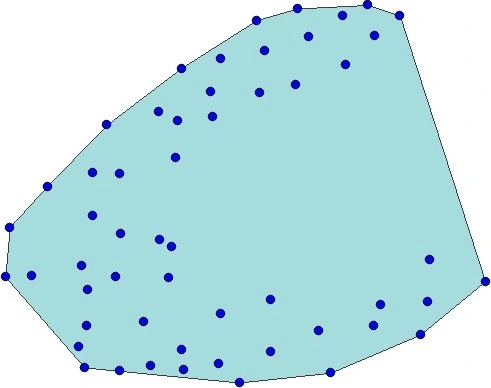In the field of computer vision, convex hull annotation serves as a valuable technique for extracting meaningful information from visual data. Convex hulls play a crucial role in delineating the overall shape and structure of objects within an image. Let's explore the key aspects of convex hull annotation, its history, advantages, disadvantages, prominent industries utilizing this technique, and its real-world applications.
Convex Hull Annotation - What Is It?
Convex hull annotation involves creating a convex polygon that encloses a set of data points representing an object's boundary in an image. The polygon is carefully crafted to encompass the outermost points while ensuring no other points reside within its boundaries. This technique is particularly useful for defining the overall spatial extent of objects, simplifying their representation for further analysis.
Historical Perspective
C. Barber, D.P. Dobkin, and H.T. Huhdanpaa proposed the QuickHull algorithm for computing the convex hull of a finite set of points in 1996. This algorithm significantly improved the efficiency of convex hull computation, making it widely applicable in various fields.
Advantages and Disadvantages
Convex hull annotation offers several advantages, such as:
Simplified Representation: Convex hulls provide a simplified representation of objects' shapes, reducing complexity for further analysis.
Fast Computation: Efficient algorithms like QuickHull enable fast computation of convex hulls, making real-time applications feasible.
However, it has some limitations:
Over-Generalization: In certain cases, convex hulls might not accurately represent complex shapes, leading to over-generalization.
Boundary Interpolation: Convex hulls can sometimes interpolate the object's boundary, resulting in minor inaccuracies.
Industries Utilizing Convex Hull Annotation
Numerous industries harness the power of convex hull annotation in their computer vision applications. Some notable sectors include:
Robotics: Convex hulls aid in defining objects' boundaries, assisting robotic systems in navigation and obstacle avoidance.
Agriculture: In precision agriculture, convex hulls are used to outline plants and identify areas that require attention.
Geospatial Analysis: Convex hulls help in defining geographical boundaries and studying territorial distributions.
Real-World Applications
Convex hull annotation finds applications in diverse fields:
Image Segmentation: Convex hulls contribute to image segmentation by partitioning visual data into meaningful regions.
Object Recognition: Convex hulls facilitate object recognition tasks by defining objects' boundaries for classification.
Discover the potential of convex hull annotation with InfoScribe's comprehensive annotation services:
https://infoscribe.ai/en/
Hours
Monday - Saturday: 08:00 AM - 9:00 PM
Location
15 Av. Guy Môquet, 94340 Joinville-le-Pont,
France
Production units
Ankerana
Antananarivo,Madagascar
 APPOINTMENT
APPOINTMENT
